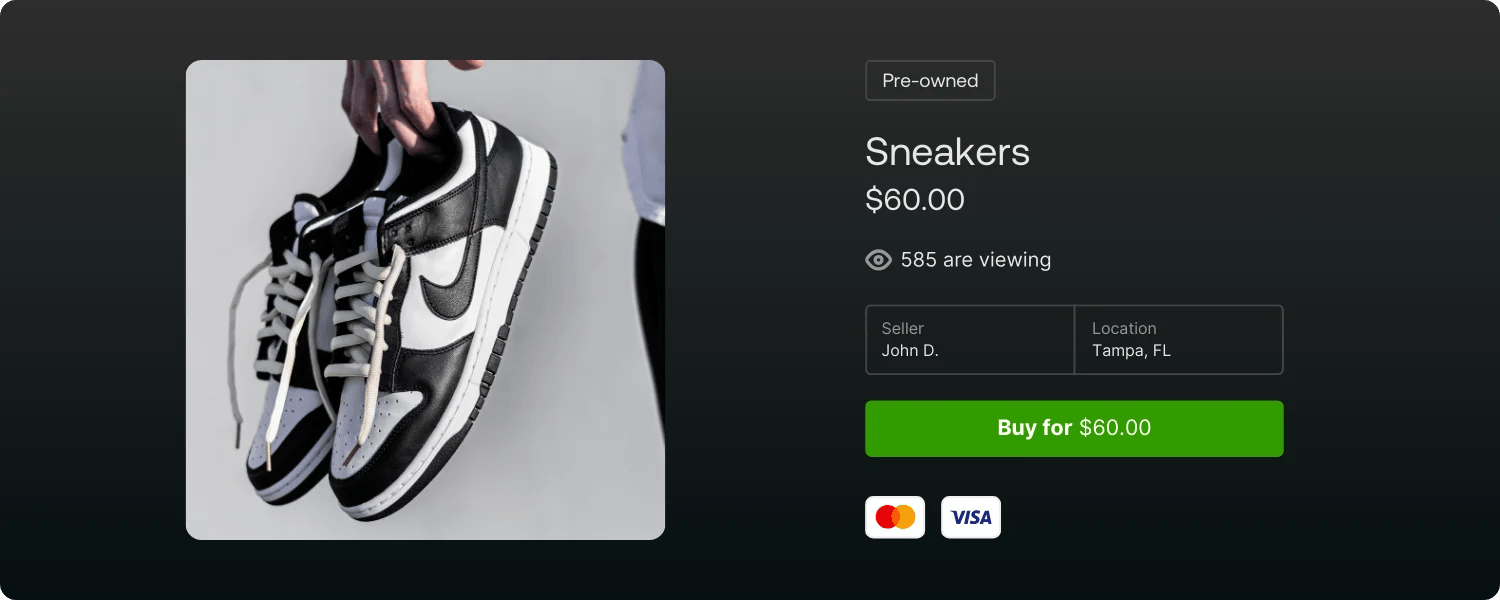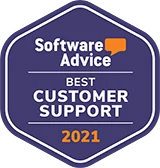Introduction
Thrift stores are magical places where people can find vintage clothing, books, video games, art, and all sorts of pre-loved products at bargain prices. Nothing beats the thrill of stumbling across something you love at a fraction of its retail cost.
Thrift stores are more than just a place to find hidden treasures. They also play a vital role in promoting sustainability and reducing waste. Landfills are overflowing with discarded items, and our oceans are suffering from pollution. With governments often slow to act, it's up to individuals to take action and support eco-friendly businesses like thrift stores.
Running your own thrift store is one way to reduce waste, ensure that goods are circulated, and, in the process, justify the energy and natural resources lost in their production.
This guide will teach you how to start a thrift store and provide many helpful pointers and tips to make your store successful.
Understanding the basics of how to start a thrift store
A thrift store is a retail establishment that sells used or second-hand items. Often, these stores are connected to a charity or cause, such as cancer, homelessness, or other social issues. However, raising funds for a cause is not a prerequisite to opening a thrift store business, with many stores operating for profit.
Thrift stores are reselling businesses focusing on selling used goods at discount prices. Typical products include clothing, shoes, books, music, board games, and consumer electronics, but there are dozens of products businesses can resell for profit. Thrift store owners get their inventory from various sources, including community donations, garage sales, and estate sales.
In recent years, thrift stores have grown in popularity. While they've always been a beloved place to find vintage clothing or other goods at knockdown prices, the surge of interest in environmental sustainability has added a new vitality to second-hand stores.
Recently, as inflation and rising living costs have hit spending power, people are turning to thrift stores to find value that is absent from the rest of the market. When married to Millenial's overwhelming preference for sustainable businesses that promote circularity and keep goods out of landfills, it's not hard to see why these businesses are experiencing a resurgence.
However, it's not just environmentalists and bargain-hunters who love thrift store shopping. Second-hand clothing in the fashion industry has gone mainstream, with several big brands embracing clothing reuse. The same trends are present across consumer electronics, with refurbished phones and laptops offering consumers an affordable and environmentally-conscious alternative to high-impact consumerism.
This guide will break down everything you need to know to start a thrift store and become a central part of this important moment of sustainable change.
Initial considerations before starting a thrift store
Of course, just because the market is booming doesn't mean you should rush out and start a thrift store. You need to ensure that the business is right for you.
Thrift stores are a classic recession-proof business. However, they involve a lot of hard work and logistics to succeed.
Here are some steps to ensure the thrift store life suits your sensibilities.
Pick your niche
Thrift stores stock a wide variety of items. Some typical things include clothes, footwear, accessories, games, books, records, furniture, antiques, etc. It will make your life a little easier if you have a pre-existing interest or knowledge of one or more of these areas because you'll know the value and interest levels of potential inventory and already have a good idea of your target market. However, thanks to the internet, important information is already out there, so it’s not a dealbreaker if you’re not a fashion or literary expert.
If you've decided on a location, consider the other thrift stores in your area. Consider what items they stock and see if you can provide a new thrift store niche that brings something unique to the neighborhood. That said, going general will open your net to a broader audience, so don’t rule that out.
Write a thrift store business plan
Writing out a detailed thrift store business plan will help you understand the viability of your potential business. A solid business plan acts as a roadmap for your store and can help you secure funding.
Here are the features you need to complete a compelling document.
-
Executive summary: A short punchy review of your entire business plan
-
Company information: Details about your niche and the target audience you plan to serve. This section is where you talk about your target audience and why your business will appeal to them. Additionally, share your relevant expertise and anything else that will give your store an edge.
-
Market analysis: A deep dive into the general thrift store market on both a global and local level. Demonstrate how your business will compete.
-
Management: List everyone involved in your business and what they bring to the table. Additionally, thoroughly describe your business structure.
-
Product or service: Comprehensive details about your service, what you plan to offer the market, and why it has a good chance of success.
-
Marketing strategy: A solid go-to-market strategy that details precisely how you plan to make sales and capture market share.
-
Funding details: List any funding you need and demonstrate how you will spend the money to help your store.
-
Financial projects: A five-year project of where you see your business going, with plans or opportunities for expansion.
You'll have a solid thrift store business plan if you include all these sections.
Conduct market research and analyze trends within the thrift store space
According to the ThreadUp annual resale report for 2023, the global secondhand market will double by 2027, reaching a staggering $350 Billion. And that's including just apparel. To give you a better sense of scale, the report also suggests that 1 in 3 items of clothing bought in the last year were second-hand. These figures suggest there is a clear global appetite for thrift stores.
Conducting market research should happen on a local and global level. Staying on top of trends is essential. But it's just as important to understand what is happening in your area. You should understand how many thrift stores operate in your area and what goods they specialize in. With the right knowledge, you should be able to identify untapped or underserved portions of the market.
Capital and funding: How much does it cost to open a thrift store?
You'll need rock-solid financials if you're serious about becoming a thrift store owner. Let’s break down the start-up costs for this venture.
Lease or rent for your store
Renting a retail unit is one of the most significant expenses you must contend with. You’ll need a shop floor, plus storage. Per this article by LA Vintage, the average size of a thrift store used to be 10,000 square feet. However, as the author suggests, stores are downsizing.
Modern boutique-style thrift stores can be as small as 1200 to 2000 square feet. With the average commercial unit in the US going for $18, that means annual rents of $21,600 to $36,000.
In a European context, it’s not much better. Here’s a detailed breakdown of European rents in Euros per square meter.
In both the US and EU, prices will vary by city, location, and even the condition of the unit. Shop around to find a lease or rent that you can afford.
Rent per year: $21,600
Utilities
You’ll also need money for water, electricity, internet, heating, and other utilities. Again, this varies greatly, so budget for about $200 per month.
Utilities per year: $2,400
Store setup
Your unit could need much work to convert into a thrift store. It depends on what’s already there or what the shop was before. New railings, shelves, store signs, renovations, and repairs can all cost significant sums.
Renovations and setup costs: $5,000
Business insurance
You’ll also need to factor in insurance, including:
-
General liability insurance
-
Commercial property insurance
-
Professional liability insurance
-
Workers' compensation insurance
-
Business owner's policy (BOP)
Business insurance costs per year: $1,500 to $2,000
Marketing and advertising
Marketing and advertising is another thing to consider. A website, flyers, social media ads, and more could cost you around $2500 and more.
Marketing and advertising per year: $2,500
Retail software
Software, like a point-of-sale system and inventory management tools, are all part of modern retail setups. They could set you back around $2500 or $4500 per year.
Software subscriptions per year: $2,500
Inventory
Inventory costs will vary depending on your niche and where you source your items from. If you can get charitable donations, then your costs will be low. Otherwise, you’ll need to sink at least 5k into inventory to start generating profits.
Inventory costs: $5,000
A rough estimate of the minimum investment required
| Business expense per year | |
| Annual rent (1,200ft²) | $21,600 |
| Utilities | $2,400 |
| Setup costs | $5,000 |
| Business insurance | $2,000 |
| Marketing and advertising | $2,500 |
| Software | $2,500 |
| Inventory | $5,000 |
| TOTAL | $41,000 |
So, you’re looking at annual expenses of at least $41,000 for your first year, and that’s before you add any employees. Additionally, these calculations are based on a small-sized store. Of course, you can find ways to cut expenses by doing things cheaply, pulling favors from friends, and so on.
The general rule of thumb is that you should have three to six months of expenses to cover your business. So, that’s basically a minimum of $10,000 to $20,000 to get your thrift store off the ground. But remember, these are just ballpark figures. Setting up a store in downtown LA or Paris will be more expensive than in a small countryside town.
Secure funding for your thrift store
As you can see, opening a thrift store can require a severe amount of capital, depending on the size and scope of your operation. However, securing capital and funding to start a thrift store is possible in several ways.
-
Personal savings
-
Bank loans
-
Small business loans
-
Business credit card
Sourcing items for your thrift store

The most important thing for a thrift shop is a steady stream of inventory. Here are a few avenues that you can explore to secure stock.
-
Estate sales
-
Storage unit auctions
-
Donations
-
Garage sales
-
Flea markets
-
Consignment
-
Online auction sites
-
Second-hand wholesalers
One of the best and most essential ways to get inventory is through your local community. Reach out to people to help ensure that goods stay out of landfills and get a second life by being donated or sold to your store. Sure, you’ll get a mixed bag, but, as they say, one man's trash is another man's treasure.
What sort of profit margin should you expect from your inventory?
While it does depend on the item, anything you buy for your store should have a markup of at least 100%. Let's take a quick example.
You see a pair of shoes that retail for $100. You can sell them for around $50 if they're in excellent condition. Therefore, the maximum you can pay is approximately $25, ideally less.
Remember, this is just a general rule. Buying from storage unit auctions or even bigger thrift stores can help you drive down each item's costs, giving you a bit more flexibility on margins.
Registering your business
Next up, you need to make your thrift store business official. Here are the steps you need to follow.
Pick a business name
Select a business name for your thrift store. This is important for registering your business, shopfront, website, and socials. If possible, pick a name that evokes the wonder of thrift stores.
Decide on a business entity
Next up, you need to decide what business entity to choose. Consider wisely because your decision will have tax and legal implications. The main choices are:
-
Sole proprietorship: Easy to set up, but you’ll pay tax on your business earnings and salary. However, you’ll be personally liable for debts or lawsuits.
-
Partnership: Similar to a sole proprietorship, with the added risk of being responsible for your partner's missteps.
-
Limited liability company (LLC): Slightly more challenging to form, but it protects you from liability for debts and lawsuits while avoiding double taxation.
Ensure you seek legal advice about what business structure will work best for you.
Business registration requirements
In the US, you must register with the IRS to pay taxes. Once done, you'll get an employer identification number (EIN), which you'll need to open a business bank account.
Around Europe, the setup is broadly similar. However, speaking to a professional or researching your local rules and regulations is best.
Business bank account
Setting up a dedicated business bank account is essential. You'll need to keep your business finances separate from your finances. Moreover, a business bank account gives you access to capital and business credit cards. Both can help your cash flow, which is essential in any industry that requires you to invest in inventory to make profits.
Legal and regulatory considerations
Thrift stores are either for-profit businesses or not-for-profit businesses. It's up to you which model you prefer, but each category has different consequences regarding permits, taxes, and even renting premises.
A not-for-profit business can take advantage of rent and tax breaks. However, these benefits come with additional scrutiny and paperwork. Setting up a charity shop is a big task for a first-time business owner.
For-profit businesses, on the other hand, are a bit simpler. Opening a thrift store business requires securing a few licenses and permits. Some of these may vary depending on where you live. Once again, ensure you check local guidance.
-
Business permit or business license
-
Sales tax permit
-
Zoning permit (which may already come with a retail unit you rent or lease)
-
Wholesale license
Location is key
Finding the right location can be the difference between running a successful thrift store and going out of business. Some of the things you should consider when choosing a site include:
-
Foot traffic
-
Nearby parking space
-
Windows that allow you to display your goods to walkers by
-
Sufficient floor and storage space
Of course, things aren't as simple as grabbing a retail space in the busiest parts of town. High-traffic areas come with high rents. Moreover, because these storefronts are in high demand, landlords can demand long-term contracts of five to ten years.
One obvious solution to rent problems is to start an online thrift store. It vastly increases your reach and target market while driving down overheads. However, it’s not an either-or situation. You could have an online thrift store alongside your brick-and-mortar business or be online only. Pick the option that works best for you.
Marketing and Promotion
You need to invest in a marketing plan to attract customers. Thankfully, there are a lot of different customer acquisition strategies, some of which are perfect for a thrift store.
Website
Setting up your website has several advantages. For starters, it can help you reach more potential customers, and it definitely establishes a certain level of trust when a business has a well-designed website. Building a website has never been easier or more cost-effective, thanks to no-code website builders like Squarespace, Wix, etc. We have personally reviewed both platforms. If you're having trouble selecting a website builder, check out these articles:
To promote your site, you should optimize your website for search engine visibility (SEO) to attract online shoppers. Local SEO practices suit to promote your store to people living nearby.
There is an excellent alternative to building your own site. You can set up your store on marketplaces like eBay or Etsy. These platforms can benefit if you operate exclusively online, as they boast significant user bases. On the other hand, their sales commissions are tens of percentages, meaning that the overall cost can rise quickly with high volumes.
Social media is also gaining popularity as a marketplace for second-hand goods, as evidenced by FB Marketplace's more than one billion monthly visitors, of which 250 million users sell goods through the platform monthly.
So, having your own website is not the only way to do business online. Today, there are many, often lighter, ways to sell products online than a full-blown online store. Especially for sellers of second-hand goods, whose range is constantly changing, updating the website and product catalog can be overwhelming. Therefore, despite high commissions, listing products on external platforms is a viable option.

Google Business Profile
A Google Business Profile is an excellent way to get local traffic. These profiles are great for local search visibility. For example, if a user is near you and enters search terms like “thrift store” or “clothing,” they will be served your business profile, location, photos, and even reviews and ratings. Creating a business profile on Google will also get you visibility on Google Maps. This feature can help your business and drive foot traffic to your store.
Paid online advertising
Paid online ads are a good option if your thrift store operates an online store. These ads can connect users searching for secondhand goods with your website. That’s not to say that you can’t use these ads to drive awareness and traffic to your website. Ad platforms like Meta facilitate precise geographic targeting, which can help put your business in the minds of prospective customers.
Content marketing
Content marketing is a relatively inexpensive way to gain followers and trust. It involves using blog posts, videos, social media content, and email newsletters to promote your brand. You need a good understanding of your target audience and their interests to produce engaging content.
Social media
Setting up social media accounts for your thrift store business is critical. It's not just that it's where the conversations happen; it's also that your biggest demographic is the most frequent users.
Get creative with your posts. For example, you could offer 5% or 10% off goods if users create an Instagram story about a bargain found at your store. User-generated content can help improve your reach while communicating your value proposition and supplement the posts you make.
Community engagement
Thrift stores have a long and storied relationship with charitable causes. While your store doesn’t need to be set up to help a particular issue, that doesn’t mean you can get involved with your community. You can donate part of your profits to specific charities, sponsor events, or even host get-togethers in your space. In short, get involved.
Smooth operations
Like any business, a thrift store has various day-to-day tasks to ensure they are running correctly.
Checking in new inventory
In the best-case scenario, your inventory is flying out the door. However, it's good to keep meticulous records. For starters, they'll help with tax and financial records, but perhaps more interestingly, you can use the data to see which goods sell well and which are slow. You can leverage this information to influence your future inventory purchases and ensure you're making the most from your display spaces.
An inventory management system is essential if you want these granular and reporting features. Additionally, you can connect these systems to your website, ensuring your site accurately reflects your current inventory.
Note that inventory management in a second-hand store is not as predictable as for a regular retailer. You cannot be sure whether you will always have a particular model from a particular label in a particular size in stock. Each item you sell has its provenance, making it unique. This small detail makes buying and selling second-hand goods operationally wholly different animal from normal retail operations. That's why the business tools should also be different.
Posting to online marketplaces
External online marketplaces have more reach, as discussed earlier. As such, they can be a great source of business income. The downside is they create extra work, like photographs and product descriptions for your inventory. However, they could be a great outlet to shift stock that doesn't have a market in your location.
Making presentation a priority
Take the time to present your inventory in its best light. If everything is all jumbled up and stacked incoherently, it's hard for people to find what they want. Instead, use good lighting and exhibit items just like a regular retail store, including using your shop window to promote your goods.
Establish relationships with local recycling organizations
Some of your inventory won't sell; this is even true for quality items. It's just the nature of the game. If you are getting rid of stock, ensure that it gets upcycled, recycled, or reused in some way. Don't let your shop contribute to pollution and waste.
Setting your thrift store apart
The thrift store industry is booming. However, whether you're selling clothing, electronics, or anything else, you'll face a lot of competition. And that's just locally. Take your thrift store business online, and you're competing against a whole world of sellers. So, to get an edge, you need to find a way to stand out from the crowd.
When looking for a unique selling point (USP), remember that you're not just competing against other thrift stores. You are also up against other retail stores and online retailers. The first thing to do is consider your competitive advantages over other retailers. Then, you can explore pressing home these advantages in new and exciting ways.
Let's explore some advantages and ideas you can use to help your thrift store business stand out.
Pricing
Competitive pricing is one of the most significant advantages of a thrift store. People love bargains, and thrift stores are a byword for buying goods. Cutting prices to the bone is a challenging strategy to make work. However, you can explore incentives like buying three items to get the lowest-cost one for free.
Our comprehensive article about pricing thrift store items should give you some ideas.
Choice
One of the most unique aspects of a thrift store is the sheer variety of products. Quite often, the inventory has just one commonality: secondhand. Your options here are to cast a wide net and provide everything under the sun or drill down and offer a curated set of goods. Both approaches have merit.
Your location will inform your choices. If you pick a niche, you must ensure sufficient interest in your areas for these goods. This is relevant to both potential customers and having access to fresh inventory.
Environmental impact
The sustainable qualities of your business are attractive to a new generation of buyers. So get involved in the community, commit money to important causes, and use your store to promote environmental practices and education.
Sustainability and the future
Sustainability is one of the big reasons for the resurgence of interest in the thrift store market. People are looking for alternatives as we develop a greater understanding of the environment and the impact of the linear economy on the planet. As such, the market outlook for sustainable businesses, like thrift stores, is very optimistic.
In the Thread Up 2023 report, the authors suggest that second-hand clothes cut carbon emissions by 25%, on average. The report puts into context how if everyone bought just one used item of clothing instead of a new piece this year, that would be the equivalent of:
-
76 million cars taken off the road for a day
-
46 billion days of drinking water for one person
-
37 billion hours of watching Netflix
These figures are stark. They do a great job of demonstrating how small actions can have significant impacts. Opening a thrift store business offers a credible alternative that helps citizens make better, kinder choices. Even the traditional retail industry is pivoting towards sustainability through second-hand goods.
Conclusion
Almost one-fifth of Americans use a thrift store each year. These shops are also trendy around Europe. When added to the demand for sites like Poshmark, Etsy, Depop, and eBay, there is a clear trend. In fact, Thread Up suggests that second-hand shopping is growing eleven times faster than regular retail shopping.
Opening a thrift store business or online store is your chance to make an impact. It can help the community and the environment by being part of a shift towards sustainability and circulatory. With the right organization and marketing, you can build a fulfilling business that generates steady profits from items that could otherwise end up in a landfill.
Running a thrift store takes time, dedication, and a lot of hard work. However, the sense of satisfaction you get from connecting a customer with a pre-loved item is hard to beat.








